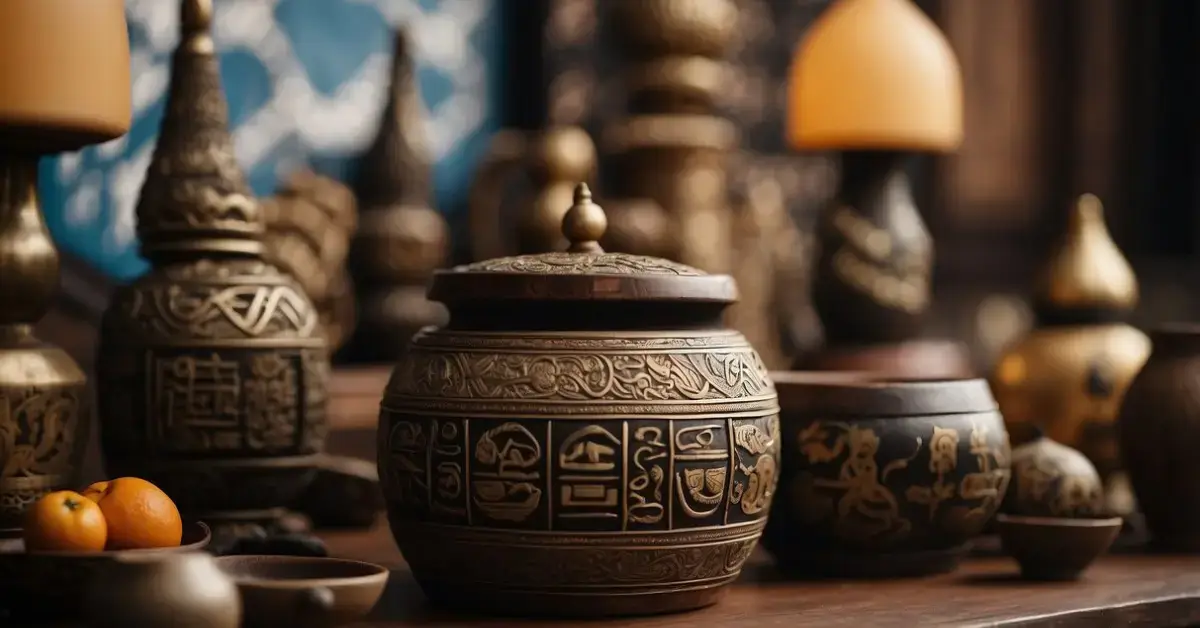Learn about the intricate rituals and spiritual significance of Korean shamanism, a tradition blending animism, Buddhism, and Confucianism.
Foundations of Korean Shamanism
Korean shamanism, also known as Muism, has deep roots in Korea’s history, blending indigenous beliefs with influences from Buddhism, Confucianism, and Taoism. This rich tradition involves various spiritual practices, rituals, and ceremonies that have evolved over millennia.
Historical Context and Evolution
Korean shamanism dates back to prehistoric times, serving as an integral part of Korea’s cultural identity. Early forms of this folk religion were shaped by animism and the worship of ancestral spirits and nature deities like the Dragon King.
Significant developments occurred during the Three Kingdoms period, particularly in the Silla and Goryeo dynasties, where shamanism coexisted with Buddhism and Confucianism.
During the Joseon Dynasty, shamanism was suppressed by the ruling elite, who promoted Confucianism as the official state religion. Despite this, it endured, adapting to changes and incorporating elements from other spiritual traditions, including Daoism and, more recently, Christianity.
Spiritual Beliefs and Practices
Korean shamanism centers on the belief in a multitude of deities and spirits, including ancestral spirits and nature gods. The shaman, often called a mudang, serves as an intermediary between humans and the spiritual realm.
Fundamental practices include divination, healing rituals, and exorcisms. These practices are believed to bring balance and harmony between the spiritual and physical worlds.
Korean shamans, both men and women, undergo rigorous training to develop their spiritual abilities. They often communicate with spirits through trances, drumming, and dancing. The belief system emphasizes moral values, respect for ancestors, and a harmonious relationship with nature, reflecting a blend of animism, Buddhism, and Confucianism.
Rituals and Ceremonies
Rituals and ceremonies in Korean shamanism are diverse and elaborate. One of the most prominent rituals is the kut, a ceremony performed to invoke deities, honor ancestors, and seek blessings for health, prosperity, and protection from evil spirits. These rituals can last several hours to several days.
Other significant ceremonies include ancestral rites (jesa) and rituals for specific life events like birth, marriage, and death. The performance of these rituals involves colorful costumes, rhythmic drumming, and intricate dances.
Shamans often use sacred objects such as knives, bells, and fans, each carrying symbolic meanings. These ceremonies not only fulfill religious functions but also reinforce cultural values and communal identity, connecting participants with their heritage.
The Role of Shamans

In Korean shamanism, shamans play crucial roles that touch many aspects of people’s lives. Their responsibilities range from acting as intermediaries between humans and spirits to performing rituals for healing and guidance.
Initiation and Vocation
Becoming a shaman often begins with a spiritual calling or an intense personal crisis. This crisis, known as “spirit sickness,” may involve physical and mental distress that only subsides once the individual accepts their calling.
I remember learning about the initiation rites called naerim-gut, where the Mudang (female shaman) undergoes rituals to establish a connection with the spirit world. These ceremonies are marked by drumming, chanting, and dancing, leading to the spirit possession that empowers the new shaman. There are multiple types of mudang, with some specializing in fortune-telling, divination, or healing. Men, known as Paksu, also become shamans, although they are less common.
The role of shamans is not simply chosen but felt deeply. Their vocation often sets them apart from mainstream society, where they might face discrimination or be regarded as outcasts. Despite this, Misin (shamanic literature) often highlights the crucial role they play in maintaining spiritual balance within communities.
Functions in Society
Shamans serve various essential roles in Korean society. One of their primary functions is conducting Gut ceremonies, which involve rituals to appease spirits or communicate with the deceased. These ceremonies help maintain harmony between the human and spirit worlds and are often accompanied by drumming and musical instruments to facilitate communication.
Healing is another significant function of shamans. Through rituals, they perform spiritual therapy, alleviating physical and mental ailments believed to be caused by supernatural influences. I’ve seen many seek Manshin (expert shamans) for advice on health, relationships, and business.
Shamans also provide divination and fortune-telling services, helping individuals make critical life decisions. Using tools like paper symbols and geomancy, they offer insights based on their deep spiritual experience. Ancestor worship ceremonies are another aspect of their role, where they honor deceased family members (chosang) to ensure their well-being in the spirit world and to enlist their guidance and protection.
Through these various functions, shamans integrate the spiritual with the everyday, ensuring that the traditions and beliefs of Korean shamanism continue to thrive.
Shamanistic Symbols and Tools

In Korean shamanism, various symbols and tools play crucial roles in rituals and ceremonies, often acting as links between humans and the spiritual world. These items are deeply embedded in tradition and hold specific cultural and ecological significance.
Sacred Objects and Offerings
One of the most fascinating aspects of Korean shamanism is the use of sacred objects and offerings. For instance, in Seoul, knives are utilized in certain rituals to symbolize cutting away negative energies. Longevity symbols like silk cloth or princess dolls may be used to invoke blessings for long life and prosperity.
Offerings to the gods are another important practice, often including food, coins, and silk fabrics. These items are believed to appease the gods and spirits. In rituals, mudang (shamans) sometimes perform dances, accompanied by music, to offer these items ceremonially. For instance, offerings at the foot of trees along rivers are common, symbolizing a deep connection with nature.
Ecological and Geographical Significance
Korean shamanistic practices often have a strong ecological and geographical context. Ceremonies may involve locations like mountains, rocks, and rivers, which are seen as sacred. The significance of these locations is deeply rooted in tradition. For example, the Ten Gates of Hell is a concept symbolized by certain geographical landmarks and is integral to exorcism rituals.
In both South and North Korea, specific places are considered spiritually potent. Siberia‘s influence on Korean shamanism can be noted in the adoption of certain practices. Tigers and trees hold special places in rituals, often representing power and spiritual connectivity. Faiths and practices can vary but share common elements like the presence of sacred geographical features. This connection to nature is a fundamental aspect of Korean shamanistic symbols and tools.
Shamanism in Korea is deeply meaningful and rich in tradition. From the objects used to the ecological specifics of ritual locations, each element contributes to a spiritually vibrant practice.
FAQ – Korean Shamanism
Are shamans good or bad?
Shamans are not inherently good or bad; they are spiritual practitioners who facilitate healing and maintain balance. Their role varies across cultures, often bridging the physical and spiritual realms for the community’s well-being.
What is a Korean shaman ritual called?
A Korean shaman ritual is commonly referred to as “Gut” or “Gut Ceremony.” It involves music, dance, chants, and rituals performed by the shaman to communicate with spirits and seek their guidance or intervention.
Are Korean shamans exclusively female?
Korean shamans, known as “Mudang” or “Manshin,” historically were predominantly female. While the tradition has been largely female-dominated, there are male shamans as well, albeit less common historically.
If you liked this blog post about the topic: Korean Shamanism, don’t forget to leave me a comment down below to tell me about your experience with it. Or have a look at my other articles:
- What Is Shamanism: Exploring Ancient Spiritual Practices
- Is Lucid Dreaming Dangerous: Risks and Benefits
- How To Connect With Your Higher Self: Simple Steps
- White Aura: Discovering Its Meaning And Benefits
- How Many Spiritual Gifts Are There: A Friendly Guide
- How to Be More Spiritual: Simple Daily Practices
Feel free to also check out our other Articles from the category “Spirituality“ and don’t forget to follow us on Pinterest.


